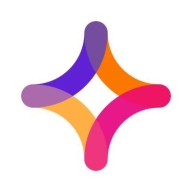

Jitterbit Harmony and JAMS are two products that compete in the automation and integration category. Jitterbit Harmony is noted for its ease of use and versatility, while JAMS is known for its specialized automation capabilities and cost-effectiveness.
Features: Jitterbit Harmony offers powerful API integration, data transformation abilities, and cloud adaptability. JAMS provides enterprise-level job scheduling, workflow automation, and robust reporting tools.
Room for Improvement: Jitterbit Harmony could enhance its cost-effectiveness, expand its reporting capabilities, and improve its support for complex environments. JAMS may benefit from a more user-friendly UI, more intuitive setup processes, and extended cloud integration functionalities.
Ease of Deployment and Customer Service: JAMS offers a straightforward deployment model for complex environments, supported by responsive customer service. Jitterbit Harmony provides flexible cloud-based deployment, emphasizing rapid implementation and integration support.
Pricing and ROI: Jitterbit Harmony requires a higher initial investment but ensures a substantial ROI due to its advanced integration capabilities. JAMS offers a cost-efficient setup with significant savings over time, supported by its efficient scheduling and automation features.
Their response is prompt, exemplifying how support should be.
We experience periods of major incidents annually due to capacity constraints, which result in job failures.
Currently, the system assumes flawless operation, necessitating supplemental monitoring tools to detect issues like excessive pending or stalled jobs, ensuring timely intervention by our teams.
This efficient feature has been invaluable, enabling us to streamline our workflow and enhance productivity.


JAMS offers efficient automation and scheduling with strong capabilities in planning, dependency management, and multi-platform support. Its intuitive interface and robust tools assist in managing complex workflows for enhanced resource allocation.
JAMS stands out for its blend of automation and scheduling capabilities, making it suitable for handling complex workflows across platforms. Its features such as batch scheduling, natural language scheduling, and interactive agents promote seamless integration with other tools like PowerShell. The focus on metrics and notifications ensures users are informed about operational efficiency enhancements. While JAMS is effective in many areas, users report a need for improved simulation for termination processes and a more intuitive client setup. They see potential in enhanced search functions, better exception handling, and greater transparency in custom execution. The current setup challenges like disappearing options and mobile accessibility can affect user satisfaction. Including a fully web-based client and improving documentation could add value.
What are JAMS' key features?Organizations using JAMS for workflow and batch job automation leverage its capabilities for SSIS, SQL procedures, and Python scripts. JAMS supports file automation and managed file transfers across environments like AWS and Azure. Users employ JAMS for data management, reporting, and integration tasks, including handling holiday-aware scheduling for improved task coordination.
Jitterbit Harmony is a comprehensive platform for data integration and API management, enabling seamless synchronization and automation across cloud-based and on-premises applications.
Users leverage Jitterbit Harmony to integrate systems like ERP and CRM applications, simplifying complex data workflows and enhancing automation. It supports efficient data migration and ensures smooth connectivity, handling diverse integration needs and helping streamline business processes. Users emphasize its drag-and-drop functionality and extensive templates, which contribute to its robust performance. However, improvements are needed in data mapping, error message clarity, and documentation, especially when dealing with large data volumes.
What are the key features of Jitterbit Harmony?Companies across retail, manufacturing, healthcare, and finance sectors use Jitterbit Harmony to integrate critical applications and automate workflows. In retail, it connects inventory systems with sales platforms, reducing manual effort. Manufacturers sync their ERP systems with supply chain software, optimizing operations. Healthcare organizations integrate patient management systems with insurance databases, streamlining patient care. Financial institutions use it to connect accounting software with banking systems, ensuring real-time financial data exchange.
We monitor all Workload Automation reviews to prevent fraudulent reviews and keep review quality high. We do not post reviews by company employees or direct competitors. We validate each review for authenticity via cross-reference with LinkedIn, and personal follow-up with the reviewer when necessary.